Who needs newspapers? Laid-off, downsized and kicked-to-curb copy editors can take their eagle-eyed skills to places where they will be more appreciated, such as tattoo parlors.
From Fail Blog:
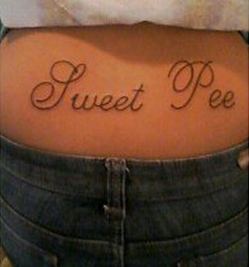 The need is desperate. More here.
The need is desperate. More here.
Regina Hackett takes her Art to Go
Whenever I determine not to read (or write) another top ten list, Glasstire: Texas Visual Art Online publishes one more great one. Beneath the absurdity of Beth Secor’s 10 tips for navigating the Ins and Outs of Openings is bedrock good sense.
Take Secor’s #6, Location, Location, Location. Last night at Heide Hinrichs and Debra Baxter’s opening at Howard House (more later), I found myself talking to a woman who wants to open a gallery in Post Alley (Pike Place Market.)
“Nobody will come,” I told her. “There’s no place to park and nothing that amounts to any kind of art density already in place.” Yes, in a better world, we’d all hoof it far and wide. Neither rain nor sleet nor hail nor snow and so forth. In this world, to misquote Bob Dylan, the dealer will die out there and be another accident statistic.
Or, as Secor put it:
6. Location, Location, Location.
Think twice about the gallery you have chosen. Is it off the beaten path, perhaps in a sewage pipe or demolished building? Is it easily accessible? (For example, does it have a door, or do you have to crawl through a window?) Is it surrounded by barbed wire? Once a patron enters, is he ever heard from again? Is the gallery owner reputable or does he have a name like Louie the Lip?
The dealer doesn’t have to stress his lip to be unreliable. Call it the kick the dog theory. A guy has a bad day at the office, comes homes and yells at his partner. His partner yells at the kid who kick the dog who defecates in the shoe of the guy who had a bad day at the office.
In a bad economy, dealers struggling to stay afloat too frequently fail to pay artists in a timely fashion if at all, thinking as dealers they need the money to make frayed ends meet. (Isn’t this the reasoning of bank robbers?)
It’s the untold story. I keep hearing it, always with a don’t-tell caveat. If desperate, artists might yell at the kid, but they protect the dealer till there’s absolutely no reason to do so. That’s why it’s important to have a dealer who doesn’t think of artists’ money as back-up stash.
Secor’s # 7 is titled, What Should I Serve? Is this a regional difference? With the exception of Garde Rail, one of whose owners is Southern, and Francine Seders, who’s French, Seattle galleries serve nothing. If you need water, somebody might spit down your throat.
In Texas, however, refreshments are expected.
It’s really important to serve some sort of refreshment at your
opening, as it creates ambience and draws people to the show in ways
that your art never will. Seriously. Typically, galleries and museums
serve wine and beer, and on occasion hard liquor and finger foods.
I love her examples of refreshments gone awry. Here’s one:
In 2000, an employee at the American Visionary Art Museum was sent to purchase food for an art opening and was told to, “buy on the cheap.” She returned with the following items: A slab of butter, hamburger buns and Craisins. Guests mistook the Craisins for salsa gone bad, and kept going outside thinking they might find hamburgers cooking on a grill, but to no avail.
At the Seattle Aquarium with a 4-year-old nephew, I gazed at an octopus running its tentacles across the clear glass limitations of its world and mused on its representations in art.
(Click images to enlarge.)
Jeff Wall photographed one in 1990, but his is the road not taken.
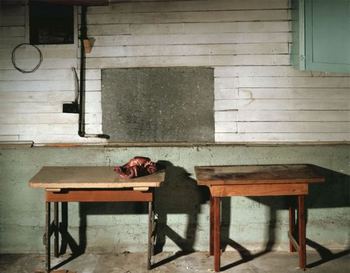 In a spare and bleak room, it’s an untidy knot of formerly organic matter grown dried and leathery, like a baseball glove forgotten in the back of a closet. It evokes the disarray of abandonment, not to the thrill of a species-to-species encounter.
In a spare and bleak room, it’s an untidy knot of formerly organic matter grown dried and leathery, like a baseball glove forgotten in the back of a closet. It evokes the disarray of abandonment, not to the thrill of a species-to-species encounter.
In the Western world, octopi live in fantasy as monsters. In the East, they are monsters on a mission. (Hokusai; not safe for work.)
Masami Teraoka (also not safe for work) added condoms. His are comic emblems of the orgasmic. Woody Allen once said that sex was the most fun he ever had without laughing. Teraoka’s fetishists of the sea bring these pleasurable opposites together.
Daikichi Amano – If a little is good, more is better.
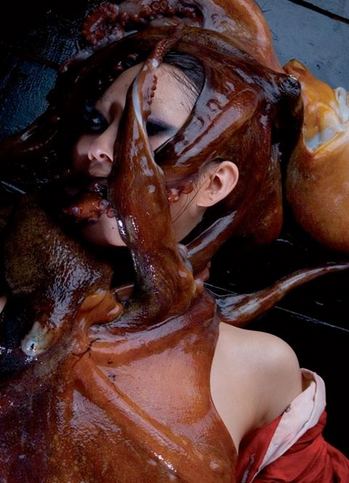 Also hitting that Japanese fish & sex note is Hajime Sorayama.
Also hitting that Japanese fish & sex note is Hajime Sorayama.
Lastly, for the carny touch: Germs4u.
On the road to the Nome King in Frank Baum’s Ozma of Oz, an obscure sequel to the Wizard of Oz, Dorothy happens upon a Hammering Man.
The iron giant is a fine fellow,’ said Tiktok, ‘and works as steadily as a clock. He was made for the Nome King by Smith & Tinker, who made me, and his duty is to keep folks from finding the underground palace. Is he not a great work of art?’
Jonathan Borosky’s working stiff continues to hammer, which can’t be said of those it so ambiguously represents. Besides the one in front of the Seattle Art Museum, which at 48 feet is the largest in the series after one in Frankurt, Borosky’s men – nearly a dozen strong – pound out silent and unchanging beats in NYC, Minneapolis, Los Angeles, Basel, Seoul, and Washington, D.C.
In Seattle at least, the big man is hit. Against the
backdrop of Robert Venturi’s facade, which was partially inspired by
Chinese restaurants, it holds its place: Venturi’s complex elegance
vrs. Borosky’s droning mechanics.
Even so, I prefer its colorful kin. They’re short, but they know how party and wouldn’t consider pounding away at nothing for the duration of their unnatural lives.
(Image via.
Click to enlarge.)
As Tyler Green noted today, American historical art is popping up all over:
The National Gallery, the Met, the Huntington and the Nelson-Atkins have all opened major American presentations this spring. (The Met isn’t done: Its American paintings and sculpture galleries open in 2011.)
Opening next year in Arkansas, Crystal Bridges (collections link here) is sure to transform the field.
In the meantime, Green wondered the following:
On a morning when an American president born in Hawaii to a Muslim
Kenyan father and a Kansasan mother is speaking about Islam, Israel and
the United States at Egypt’s Cairo University, while back home a Latina
visits Capitol Hill to drum up support for her landmark nomination to
the Supreme Court and while New Hampshire becomes the sixth state to
offer state-level marriage equality, does it make sense for our art
museums to present American art galleries that present American art as
it might have been considered in 1935?
Really, 1935? There wasn’t a great deal of enthusiasm for historical American in 1935. Let me first say I’m happy to have a dog in this race. When the Seattle Art Museum reopened in 2007, it was (for the first time) with an American wing. What is old hat in this material on the East Coast is less so in the West and especially in the Northwest, where its absence has been nearly total.
The problems in building these collections are dramatic. American historical art is now a big crowd pleaser. With the best material increasingly hard to come by, it’s tempting to offer second tier work from stars rather than shake up the field with first-rate work from lesser knowns.
Because it apparently went for the former, Christopher Knight found the Huntington lacking, here. So did a well-informed blogger going by the name of Los Angeles County Museum On Fire, here. (Who? Who knows? On the Web, nobody knows if you’re a curator at one of the institutions you deplore. Or not.)
(For this topic, we need Robert Hughes back at his peak. Failing that, we can reread American Visions.)
SAM shines in the quality of what it has collected. Starting late, it came on strong with the best material.
[Read more…] about The American historical art boom. Is it a bust? Not in Seattle.
I haven’t seen Ethan Hayes-Chute‘s Hermitage, which the Boston Globe describes as a “life-size re-creation of a hermit’s two-story wooden cabin, made with materials salvaged from dumpsters, construction sites,” but boy howdy have I seen it.
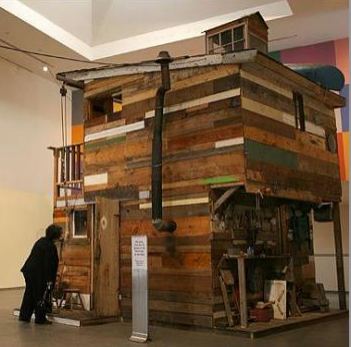 Whiting Tennis offered something similar a couple of years ago titled Bovine.
Whiting Tennis offered something similar a couple of years ago titled Bovine.
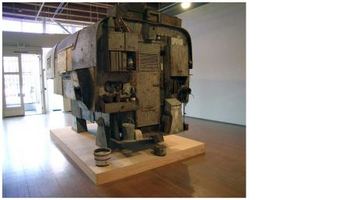 Some hard-scrabble hermit might have built either one from scraps and lived in it for decades, picking his nose and peeing out the door. Good luck to the guy. (I might be joining him shortly.) As art, however, both sculptures reek of frontier nostalgia and trade in wild West stereotypes. They’re shabby chic without the chic.
Some hard-scrabble hermit might have built either one from scraps and lived in it for decades, picking his nose and peeing out the door. Good luck to the guy. (I might be joining him shortly.) As art, however, both sculptures reek of frontier nostalgia and trade in wild West stereotypes. They’re shabby chic without the chic.
The big daddy of this sensibility is Ed Kienholtz. Hayes-Chute’s and Tennis’ sculptures are mites, and Kienholtz’s are mountains.
Everybody recycles, especially now, when the idea of breaking new ground has itself broken down. Evoking the past is not the problem. It’s evoking it in a half-assed, me-too manner, hoping to hitch a dull wagon to somebody else’s bright star.
In an exhibit titled Second Peoples at the lamentably demised Tacoma gallery known as The Helm, the killer-good artist statement on the subject reads as follows:
We
have coined the name ‘second peoples’ to describe the people who arrive
late on the scene, after the beginning, after the abundance, after the
traumatic event, after everything’s been said and done, after, even,
the end.We are the second peoples. Chances are, you are too.
This is an exhibition dealing with what it means to be second. We
inhabit a landscape of iteration, reverb, elision, and generational
noise. Our corner of North America – these mountains, that timber, this
rich land – belonged to someone else. Our popular culture-those TV
shows, that movie sequel, this new band that is so retro they’re
cool-belonged to some other time. Our art is that way, too: this
gesture to Donald Judd, that nod to Philip Guston, that Eva Hesse wink.We are interested in locating the coordinates of this second
position. How did we end up here? What is our responsibility for what
happened before us? What is our responsibility for the things that
happen now in our names? Like Simone de Beauvoir argues in “Second
Sex”, we think we should be free to transcend ourselves as subjects, to
not be confined to existential leftovers.
Contemporary art is concerned with this alchemy, trying to
turn second-handedness into first-handedness, reversing the flow of
energy, presenting not representing, creating value from valuelessness.
We think this is a worthwhile activity. We also think it is a fraught
activity. The work in this exhibition exposes some of the fractures
created by this ceaseless turning, and also dreams of a third position,
a reification of our desire to escape, a momentary place to stop.
For a brilliant, 21st-century version of the Kienholtz aesthetic, go here for a look at a Seattle Art Museum project by the brothers Oscar Tuazon and Eli Hansen. (It’s another Michael Darling effort. He is who is in Seattle curatorial circles. In his field, nobody else comes near.)
My favorite grow-your-own art project was Patrick Holderfield’s in the 1990s. Without interrupting the processes of decay, he made rugs and chairs from plastic tubes filled with rotting food. (No visuals of them anywhere on the Web.)
Artists who insist on posting only current work on their Web sites miss the opportunity for their work to be considered across their careers. Some spit on that opportunity. They want their old work to disappear from this earth. It’s the new them that interests them. Requests for images from critics who want to look backward will be ignored.
Ignored is not the worst option. Was it something I said? After I noted on this blog that Holderfield’s Web site would not release images into the image stream, Holderfield shut it down entirely. I hope it was a coincidence. At least reproductions of old work could be seen. Now there’s only the small version of what’s current at the artist’s gallery.
Holderfield’s rugs and chairs slimed their way out existence with a magnificent stink, which can’t be said for Allison Kudla’s experiments in a similar vein.
Her delicate wallpaper continues to evolve, as do her tiles.
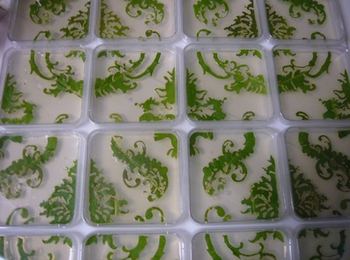 Kudla recently got a Gap Grant from Artist Trust. For a list with links to recipients’ work, go here.
Kudla recently got a Gap Grant from Artist Trust. For a list with links to recipients’ work, go here.
(Related post here.)
While on the subject of dangerous waste, James L. Acord deserves a mention.
(Below, portrait of the artist in his hasmat suit, via.)
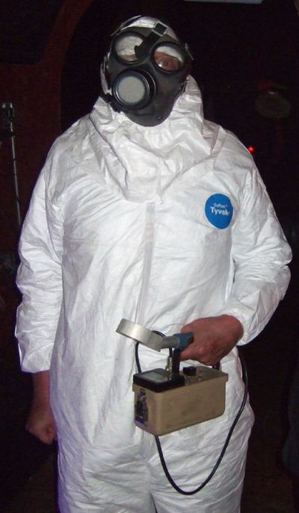 Prominent in Seattle in the 1980s, Acord moved to Richland early in the 1990s to hob-nob with engineers on the Hanford Nuclear Reservation. His aim was to make sculpture from nuclear material, more specifically, to transmute a radioactive isotope of technetium to a stable or
Prominent in Seattle in the 1980s, Acord moved to Richland early in the 1990s to hob-nob with engineers on the Hanford Nuclear Reservation. His aim was to make sculpture from nuclear material, more specifically, to transmute a radioactive isotope of technetium to a stable or
nonradioactive isotope of ruthenium and incorporate it into a stone and
advanced metal alloy sculpture.
Determined to shed his old identity and become somebody with whom
engineers might identify, he frequented Richland’s Goodwill store, buying
the kind of suits, ties and shirts engineers wear.
His hair he cropped down to a military crew cut. His shirt pocket sprouted a pen protector. As he said at the time:
The less you
frighten people, the further you get. People here tend to
think of artists as the enemy. Conversation bump along on square wheels, but they bump along.
If artists are the enemy, they’re not the kind of enemy Richland
residents need to worry about. In his time there, Acord found few others. When he was featured in a
two-part profile by Philip Schuyler in The New Yorker (October ’91), he was unable to find the magazine on sale in the Tri-Cities area.
(Acord’s project covered in the Guardian here.)
In 1993, after endless negotiations with the Department of
Energy, Acord became the only individual on the planet licensed to
“own and possess” nuclear material. To mark his triumph, he had the
license number tattooed on the back of his neck, regrettably
undercutting his efforts to pass for a local.
Alchemy is the age-old dream. I want to render high-level
nuclear waste harmless and use it in sculpture.
If nuclear waste can be rendered inert, why isn’t it done? Expense is
the reason the Department of Energy gives, but Accord had other ideas.
The Department of Energy is like the Catholic Church in the 12th
century. It’s a fully mature bureaucracy. It’s
committed to the dogma that waste should be buried in the ground. It
has 30 years of studies worth billions of dollars saying that waste
burial is good. Getting it to backtrack is hard.
(Anyone with current info on Acord, please post in the comments.)
an ArtsJournal blog


